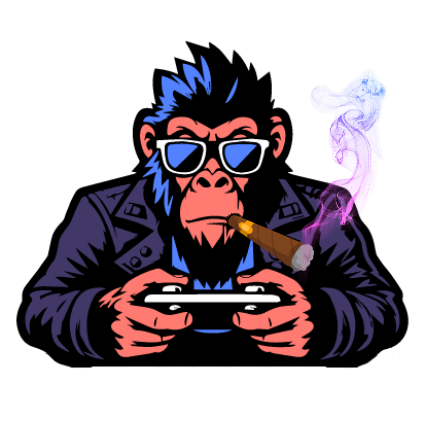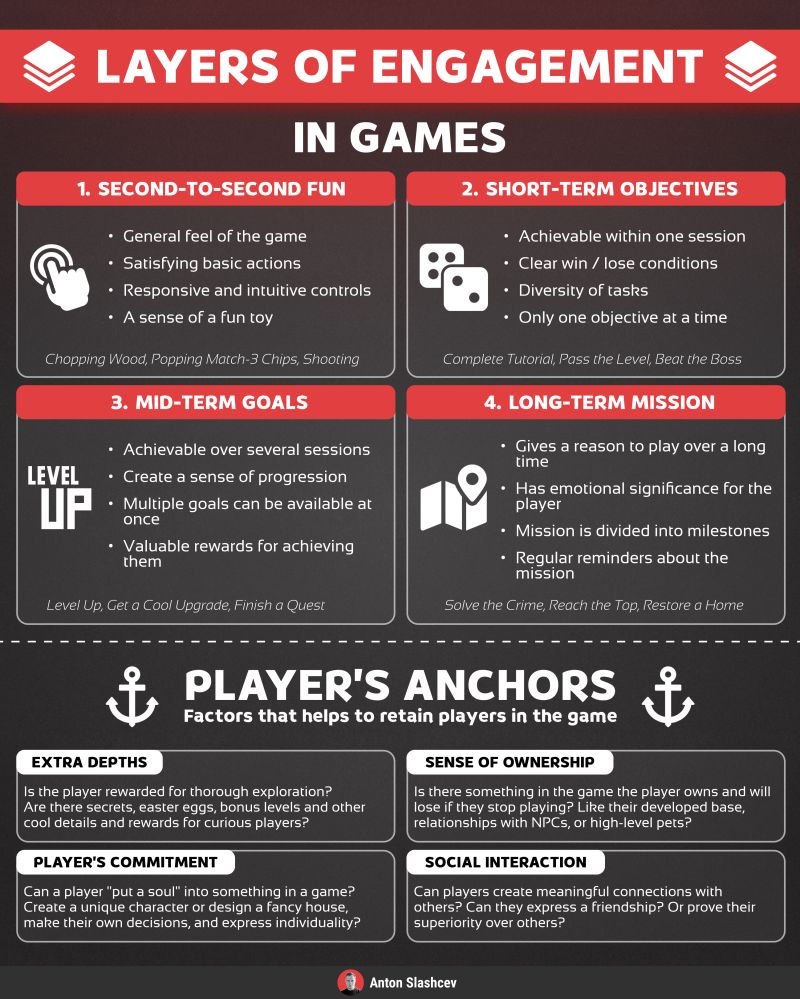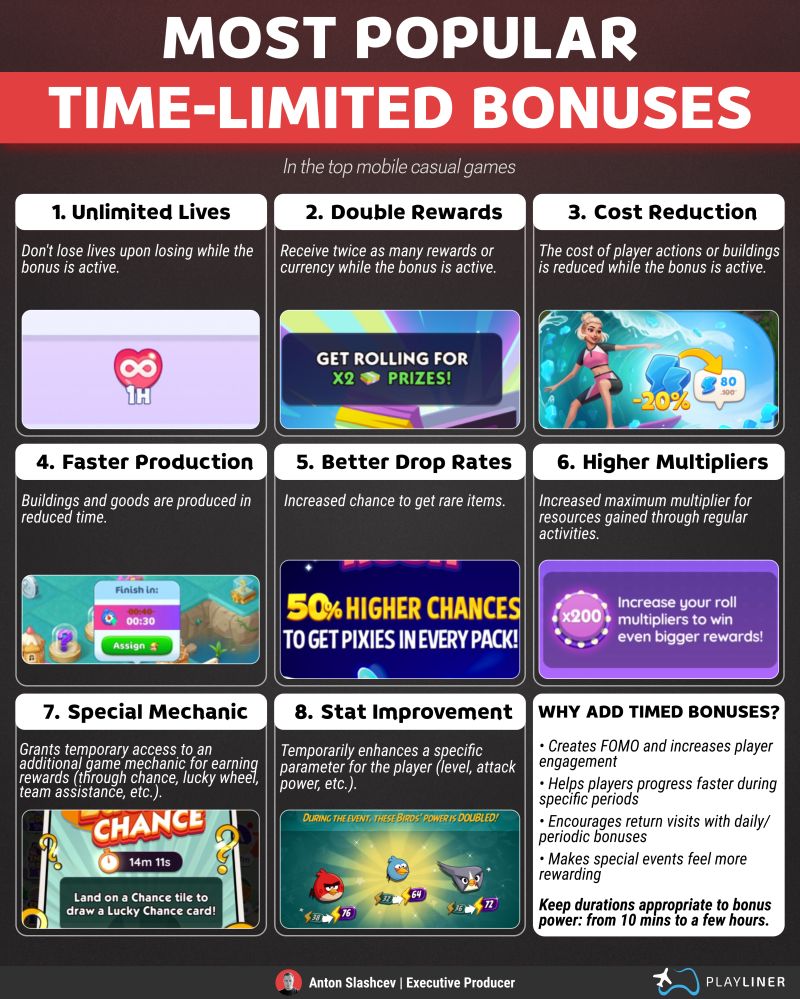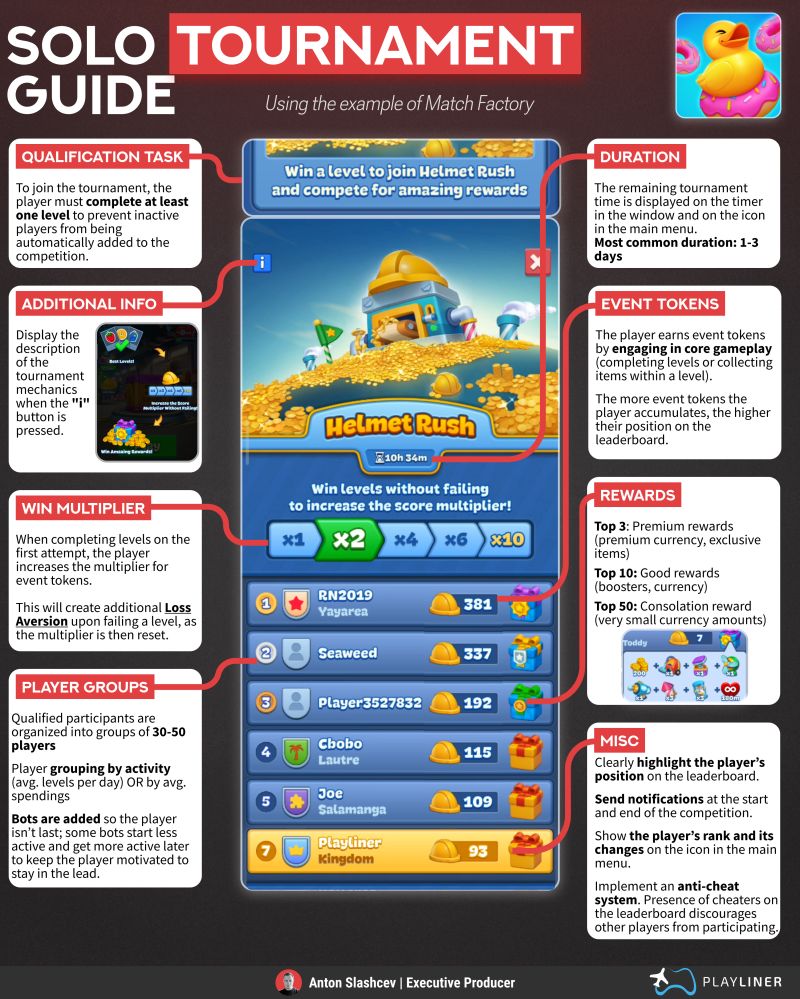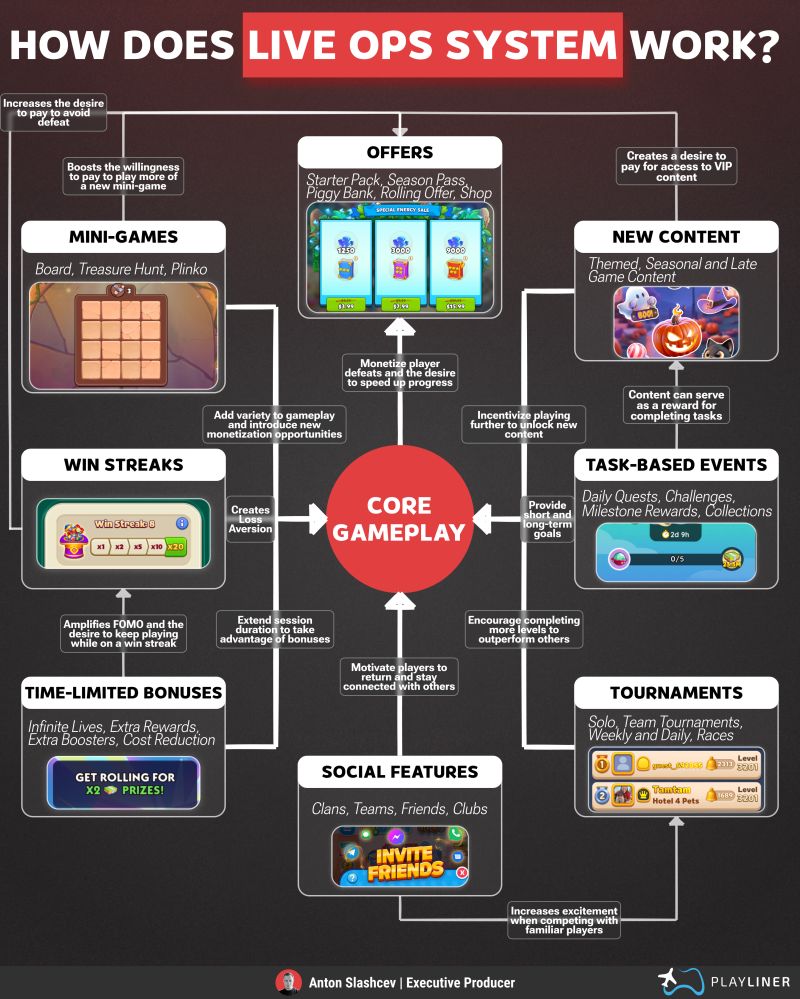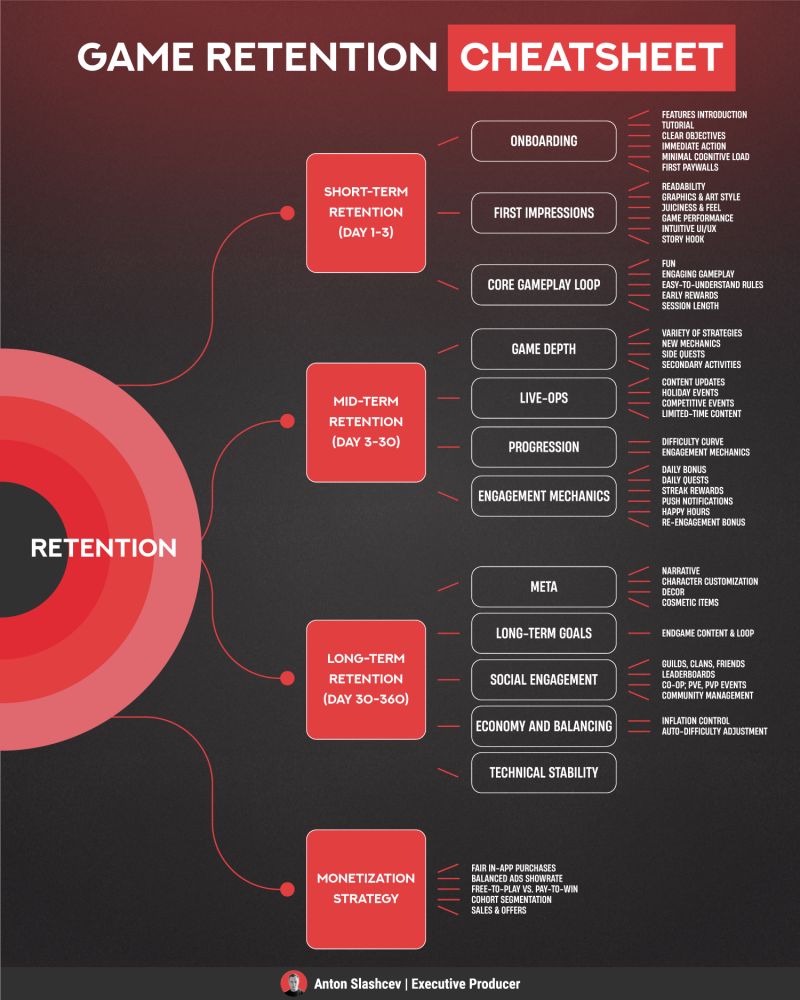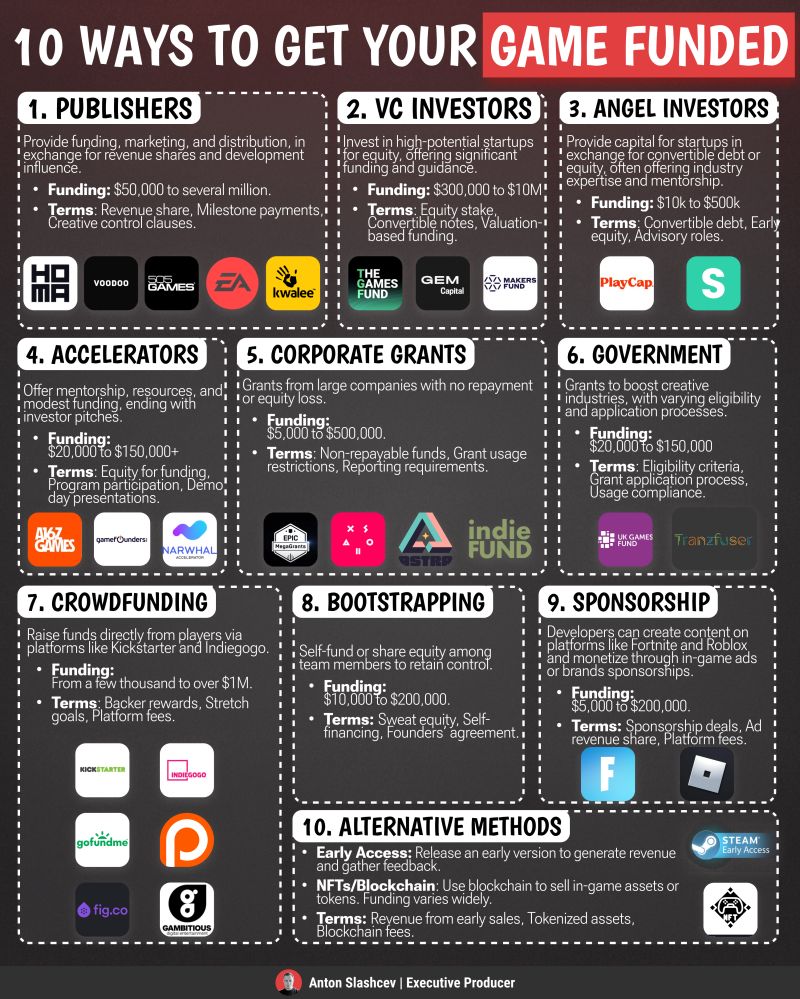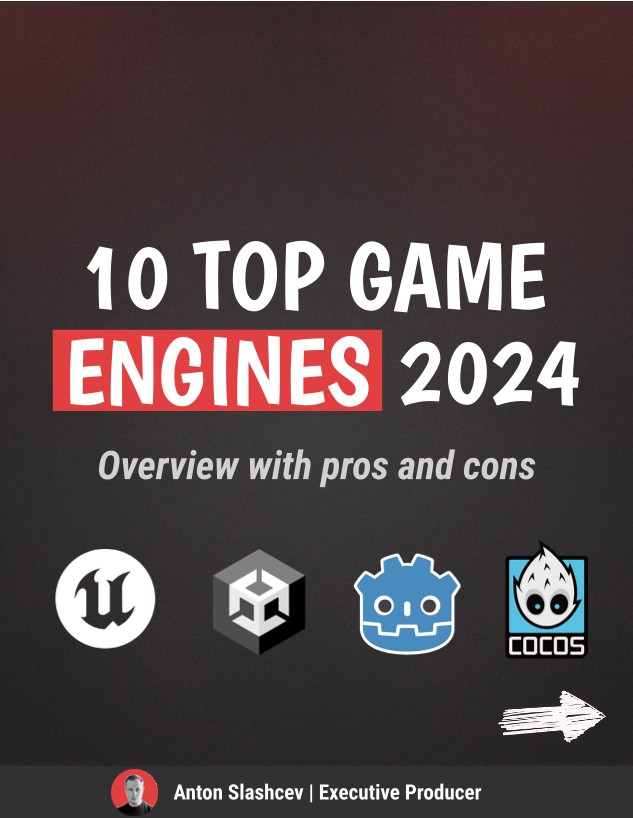What makes a game truly engaging?
What makes a game truly engaging? Here’s a breakdown: 𝟭. 𝗦𝗲𝗰𝗼𝗻𝗱-𝘁𝗼-𝘀𝗲𝗰𝗼𝗻𝗱 𝗳𝘂𝗻 🎯 The first thing players notice is the 𝙛𝙚𝙚𝙡 • Satisfying basic actions • Responsive, intuitive controls • A sense of playfulness • Think chopping wood, popping match-3 gems, or shooting. 𝟮. 𝗦𝗵𝗼𝗿𝘁-𝘁𝗲𝗿𝗺 𝗼𝗯𝗷𝗲𝗰𝘁𝗶𝘃𝗲𝘀 🏆 Players want goals they can achieve quickly. • Clear win/lose conditions • Tasks that vary to keep things fresh• Focus on one objective at a time• Examples: complete a tutorial, pass a level, beat a boss. 𝟯. 𝗠𝗶𝗱-𝘁𝗲𝗿𝗺 𝗴𝗼𝗮𝗹𝘀 📈 This layer builds a sense of progression over time. • Goals that take a few sessions to achieve • Multiple objectives to choose from • Tangible rewards for success • Think leveling up, unlocking upgrades, or finishing quests. 𝟰. 𝗟𝗼𝗻𝗴-𝘁𝗲𝗿𝗺 𝗺𝗶𝘀𝘀𝗶𝗼𝗻𝘀 🌟 This is where emotional engagement shines. • A reason to keep […]
